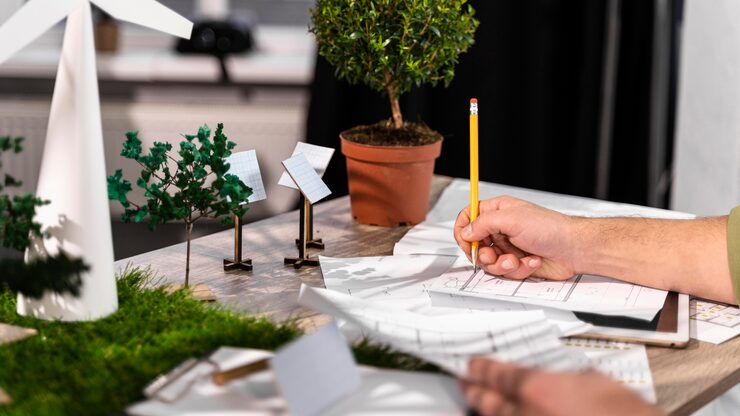In today’s world, connecting humans with nature in interior environments is essential for wellbeing and productivity. Educational programs focused on diseño biofilico provide innovative methods to integrate natural elements into interior spaces. Earth University’s program in Biophilic Interior Design equips students with the skills to create sustainable, visually appealing, and health-promoting interiors.
The Importance of Biophilic Design
Biophilic design emphasizes the integration of nature into built environments. Studies show that incorporating natural elements improves mental health, reduces stress, and enhances creativity. This approach is essential for architects, interior designers, and business leaders who aim to create spaces that are both functional and environmentally responsible.
Understanding Sustainable Interior Design
Core Principles of Sustainable Design
Sustainable design focuses on minimizing environmental impact while maintaining functionality and aesthetic appeal. It involves using eco-friendly materials, energy-efficient systems, and spatial strategies to reduce waste and conserve resources.
Earth University’s Approach
Earth University combines theory and practice to teach students how to create interiors that are environmentally responsible. Participants learn to evaluate ecological impact and incorporate strategies that support long-term sustainability, preparing them to implement diseño sostenible in real projects.
Program Structure and Learning Path
The Biophilic Interior Design program spans twelve weeks and is organized into three main modules:
Module 1: Fundamentals of Sustainable Interior Design
Students explore design principles, materials, and trends in sustainable interiors, emphasizing the integration of natural elements for aesthetics and wellbeing.
Module 2: Nature in Design and Architecture
This module focuses on biophilic patterns, the role of plants, natural light, and bioclimatic techniques, teaching participants how to enhance interior spaces while respecting the environment.
Module 3: Sustainable Interior Projects
Participants apply learned concepts to develop eco-efficient projects, select environmentally responsible materials, and understand sustainability certifications. The hands-on project ensures practical experience in implementing diseño sostenible.
Who Should Enroll
Ideal Participants
The program is designed for architects, interior designers, builders, entrepreneurs, and individuals interested in eco-friendly and nature-connected spaces. It also suits those seeking to transform ordinary interiors into wellness-enhancing environments.
Skills and Benefits
Graduates gain expertise in sustainable planning, material selection, biophilic integration, and project management. These skills enable professionals to implement green design strategies across residential, commercial, and institutional settings.
Why Choose Earth University
Expertise and Innovation
Earth University offers a dynamic learning environment with expert instructors and real-world case studies. The program emphasizes practical applications, ensuring students can design interiors that promote sustainability and human wellbeing.
Real-World Learning Opportunities
Hands-on workshops and project-based learning allow students to create tangible biophilic designs. This experiential approach builds confidence, practical knowledge, and professional readiness for implementing sustainable interior projects.

The Role of Biophilic and Sustainable Design
Integrating natural elements in interiors goes beyond aesthetics. Biophilic and sustainable designs improve air quality, reduce energy use, and enhance occupant wellbeing. Professionals trained in these methods contribute to healthier environments and a more sustainable planet, following the principles of diseño sostenible.
Advantages of Studying Biophilic Design
Graduates can pursue careers in architecture, interior design, real estate development, hospitality, corporate offices, and educational institutions. The growing demand for eco-conscious design ensures strong career prospects and opportunities to lead sustainable initiatives.
Conclusion
Education in Biophilic Interior Design is a transformative path toward creating spaces that are visually appealing, environmentally responsible, and beneficial for human health. Earth University’s program equips students with the knowledge and tools to lead in sustainable interior design, combining creativity, ethics, and ecological awareness. Through practical projects and expert guidance, graduates become change-makers, shaping interior environments that reflect a harmonious connection between humans and nature, in line with the mission of Earth University.


